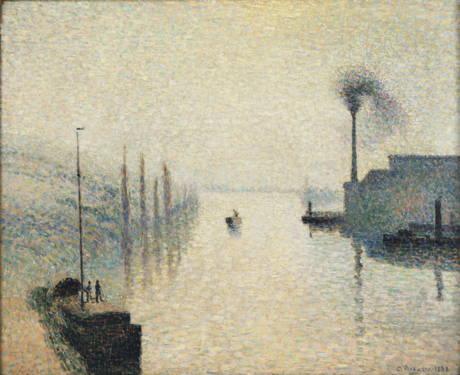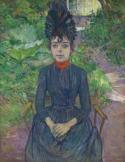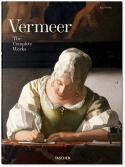Art Of The Day Weekly
#462 - from 2 March 2017 to 8 March 2017

Camille Pissarro, The Seine in Rouen, Lacroix Island, Fog Effect, 1888, Philadelphia, Philadelphia Museum of Art, collection John G. Johnson, 1917.
IN THE AIR
Pissarro, the boss
PARIS – We tend to see him as a calm elderly gentleman with a distinguished white beard, slightly demure. Actually, Pissarro (1830-1903), to whom this exhibition pays a deserved tribute, is one of the most surprising individuals in the Impressionist universe. Though in his early compositions you can trace an influence of Courbet and of Corot, Pissarro then played a pivotal role in the group and was the only one to participate in the eight exhibitions. Though he was the oldest, he was probably the most audacious. At nearly sixty, rather than repeat his old recipes, he was attracted by the research Seurat did on optical mixtures and decided to follow the younger artists in their scientific approach which resulted in “Pointillisme”. And what most probably do not know, if Cézanne and Gauguin became the artists the world praises it is in part due to his guidance and teachings. To seize his sense of light, Cézanne even copied one of his paintings, Louveciennes, from 1871, presented at the exhibition. We will also be treated to one of his rare self-portraits, brought from Dallas, to gouaches on silk brought from Mexico, loans from Cardiff, Japan, Kansas City, and a gouache of the Market in Gisors, kept in Philadelphia and which has not been seen in France since it was painted.
• Pissarro, le premier des impressionnistes at the musée Marmottan Monet, from 23 February to 2 July 2017.
EXHIBITIONS

Henri de Toulouse- Lautrec, Justine Dieulh, 1891, oil on cardboard, 74 x 58 cm, Musée d’Orsay, Paris. Photo © RMN-Grand Palais (musée d’Orsay) / Hervé Lewandowski
Paul Rosenberg, an exceptional gallery owner
PARIS – The exhibition is named for the address of a gallery in Paris, that of art dealer Paul Rosenberg (1881-1959), known for being the art dealer for Picasso and other major artists from the avant-garde movements such as Braque or Maillol. Being Jewish, the Nazis took his art collection and scattered it. His granddaughter Anne Sinclair described his destiny in a book and managed to have some of the most beautiful elements brought together temporarily, among them works by Léger, Matisse or even a portrait of Anne Sinclair at the age of 4 by Marie Laurencin.
• 21, rue La Boétie at the musée Maillol, from 2 March to 23 July 2017.
The jet set as seen by Boldini
ROME – He was the prince of portrait artists, a permanent guest at all high-society events in Paris during the Belle Epoque. Of course he was a friend of Boni de Castellane, who we refer to elsewhere in this newsletter, and whose mistresses he painted, such as Antoinette de Rafélis de Saint-Sauveur. Giovanni Boldini (1842-1931), a native from Ferrara, takes over the Vittoriano with more than one hundred works, among them the portraits of Franca Florio or Spanish dancer Anita de La Feria.
• Boldini at the Vittoriano, from 4 March to 23 July 2017.
Anatomy of the vulgar
VIENNA – Some things are considered tacky, others of bad taste, and still others simply vulgar. How do we make those differences when we refer to fashion, how do we define each category, how does our perception evolve with time? This is precisely the subject of this exhibition which covers fashion from the 18th century to our day, from dresses with ribbed petticoats to those designed by Vivienne Westwood.
• The Vulgar at the Belvedere, from 3 March to 25 June 2017.
AUCTIONS
Boni de Castellane, the last dandy
PARIS – “American women are more beautiful when you consider their dowries”, he liked to say in a semi-jokingly manner (the French pun, “Les Américaines sont plus belles vues de dot” is untranslatable. Boni de Castellane (1867-1932), the famous, penny-less social butterfly had actually chosen to marry a wealthy heiress, Anna Gould. This allowed him to live in a different lifestyle throughout the decade of the 1900s, before brusquely downgrading it when his wife, after witnessing many infidelities, asked him for a divorce. He got over it by becoming an antiques dealer. The couple lived in a lavish home on avenue Foch, the Palais Rose, which was destroyed in 1969 and together with the simultaneous demolition of the Halles market was a true crime against national heritage. There are various pieces in this auction worthy of a museum, such as the large Place de Saint-Marc by Francesco Guardi (estimated at €4 million) or the Cartier desk set in jade, lapis-lazuli and fine stones (€1 million). But what most fascinates the viewer is the brilliant, refined, light and cosmopolitan spirit of the auction itself. We see side by side toiletry sets, a mysterious pendulum, pastel paintings by Perronneau, Chinese porcelain jugs, Louis XV candleholders and a few editions of Cervantes and Custine. The whole collection is in perfect condition since it was scrupulously and lovingly cared for by a descendant in a private home on rue d’Andigné in Paris. The “last dandy” is still ticking.
• Boni de Castellane & Anna Gould, la mémoire du Palais Rose, at Christie’s on 7 March 2017.
BOOKS
Vermeer up close
Contrary to the former book, this one is entirely focused on the “sphinx of Delft” as Vermeer was called. This new publication in a smaller format of a monumental-size book still permits the reader to appreciate the details up close: the reflections on the pearls, the motifs on the table runner, the shimmer on satin, and this surprising white light which cascades down from the large glass window panes. The information cards inform us on the itinerary of The milkmaid and the way it was rapidly shifted from the incredible Six collection (which is still at the center of the news in The Netherlands) to the Rijksmuseum, or other surprising origins. While it is exaggerated to call Thoré-Burger a “rediscoverer” (the famous View of Delft had been bought as early as 1822 by King William I for the extraordinary price of 2900 florins), we can appreciate the keenness of the French critic who reorganized the corpus of Vermeer’s works as of 1859. He owned quite a few in his own collection (among them The Concert, stolen in 1990 from the Isabella Stewart Gardner Museum in Boston) and he helped banker Isaac Péreire to purchase the famous Geographer. So finally, what is it? Did Vermeer paint, 35, 36, or 37 paintings? Here the author stops at 35, since the authenticity of Young girl at the Virginal from the Leiden Collection and Saint Praxedis not seen since 2004, has been questioned.
• Vermeer, by Karl Schütz, Taschen, 2017, 258 p., €29.99.
OPENINGS OF THE WEEK

CARL DE KEYZER - HIGHER GROUND
2 March 2017 - BRUSSELS - Le Botanique
The Belgian photographer shows the effects of global warming
IN BRIEF
NEW YORK - Thomas Campbell resigned on 28 February 2018 from director of the Metropolitan Museum.
NEW YORK - The Armory Show modern and contemporary art fair, is being held from 2 to 5 March 2017.
PARIS - Laurence des Cars has been appointed director of the Musée d'Orsay. She will succeed Guy Cogeval.


